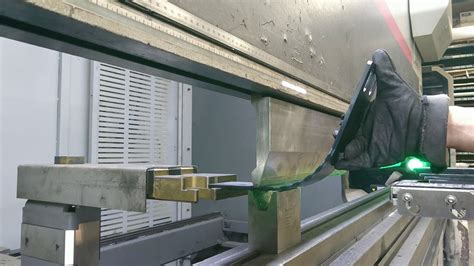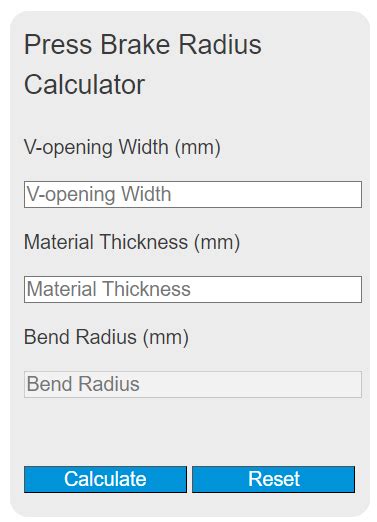bump forming sheet metal The multi-step forming process is a sophisticated technique for achieving large-radius bends in sheet metal using smaller radius punches. This method’s fundamental principle involves segmenting the desired arc into multiple polyline sections, as illustrated in Figure 1. An alternative - but expensive way is to add some J803 junction boxes - feed power in and power out on one side, and then feed two lights from the other, so five boxes needed. Or if you are replacing a ceiling rose, use a J804 as the first one.
0 · step bending sheet metal
1 · step bending
2 · press brake radius calculator
3 · large radius sheet metal bending
4 · how to calculate bumps
5 · bump rolling vs roll forming
6 · bump bending calculator
7 · bump bending
If your house has visible wiring splices or if you need to add a new splice to extend a circuit, follow these simple steps to install a junction box.
Bump forming also known as bump bending, step bending, or repetitive v-bending, is a popular sheet metal fabrication art of bending sheet metal materials into desirable cylindrical or conical shapes for different . Bump-forming is a metal bending technique that uses a series of bends to create a cylindrical bend in your metal sheet. It's often more efficient .
Each individual “bump” is in essence an extremely wide radius bend, just a few degrees complementary, and measuring that creates challenges. As Linderot explained, .

The multi-step forming process is a sophisticated technique for achieving large-radius bends in sheet metal using smaller radius punches. This method’s fundamental principle involves segmenting the desired arc into multiple polyline sections, as illustrated in Figure 1. Bump forming also known as bump bending, step bending, or repetitive v-bending, is a popular sheet metal fabrication art of bending sheet metal materials into desirable cylindrical or conical shapes for different industry applications using a press brake.
Bump-forming is a metal bending technique that uses a series of bends to create a cylindrical bend in your metal sheet. It's often more efficient and cost-effective for low-volume orders or prototypes, while hard tooling is necessary . Each individual “bump” is in essence an extremely wide radius bend, just a few degrees complementary, and measuring that creates challenges. As Linderot explained, measurement systems in adaptive forming start to work when a bend angle reaches between 9 and 25 degrees complementary, depending on the specific technology used.
step bending sheet metal
Step bending is a procedure in which multiple hits (bends) are made along the entire length of the inside radius to produce the bend. The number of hits used in this process will determine the tooling selection, smoothness of the final surface, and the .

You can obtain very wide radiused bends on a press brake without using round punches, with a technique called multiple-step bending, also called bump bending. Actual section is not a true arc of a circle but a segmented line, formed by several straight lines. This month we delve into the intricacies of bump bending and go back to basics with air forming, reviewing the relationship between the die opening, the inside bend radius, and the material thickness.
K-zell Metals offers metal bump form bending services to put a radius in sheets or plates utilizing a CNC press brake. Contact us for all your bump form bending needs!
Step Bending, or Bump Bending is a method for forming a Large Bend Radius in a sheet metal part, without the need for special tooling, by creating a series of highly open bends in close proximity. This method will have advantages over using a roller because the length of the rolled section can be controlled more precisely with high repeatability.
step bending
In his new book, Bending Basics, Steve Benson explains many key concepts for getting the most out of your bending equipment. The chapter on bump radius bending explains how to calculate the best approach for your large-radius bend without employing special tooling.
The multi-step forming process is a sophisticated technique for achieving large-radius bends in sheet metal using smaller radius punches. This method’s fundamental principle involves segmenting the desired arc into multiple polyline sections, as illustrated in Figure 1. Bump forming also known as bump bending, step bending, or repetitive v-bending, is a popular sheet metal fabrication art of bending sheet metal materials into desirable cylindrical or conical shapes for different industry applications using a press brake.
Bump-forming is a metal bending technique that uses a series of bends to create a cylindrical bend in your metal sheet. It's often more efficient and cost-effective for low-volume orders or prototypes, while hard tooling is necessary . Each individual “bump” is in essence an extremely wide radius bend, just a few degrees complementary, and measuring that creates challenges. As Linderot explained, measurement systems in adaptive forming start to work when a bend angle reaches between 9 and 25 degrees complementary, depending on the specific technology used.
Step bending is a procedure in which multiple hits (bends) are made along the entire length of the inside radius to produce the bend. The number of hits used in this process will determine the tooling selection, smoothness of the final surface, and the .You can obtain very wide radiused bends on a press brake without using round punches, with a technique called multiple-step bending, also called bump bending. Actual section is not a true arc of a circle but a segmented line, formed by several straight lines.
This month we delve into the intricacies of bump bending and go back to basics with air forming, reviewing the relationship between the die opening, the inside bend radius, and the material thickness.K-zell Metals offers metal bump form bending services to put a radius in sheets or plates utilizing a CNC press brake. Contact us for all your bump form bending needs!Step Bending, or Bump Bending is a method for forming a Large Bend Radius in a sheet metal part, without the need for special tooling, by creating a series of highly open bends in close proximity. This method will have advantages over using a roller because the length of the rolled section can be controlled more precisely with high repeatability.
press brake radius calculator

precious metals by windham fabrics
ppi sheet metal
The pro mount is setup for multiple mounting options including a single gang box. But also, you can just make one tiny hole and run the Ethernet through that and just mount the AP directly to .
bump forming sheet metal|how to calculate bumps